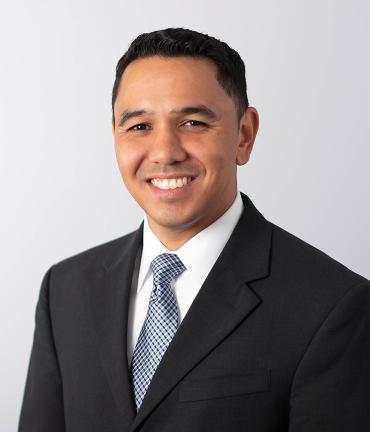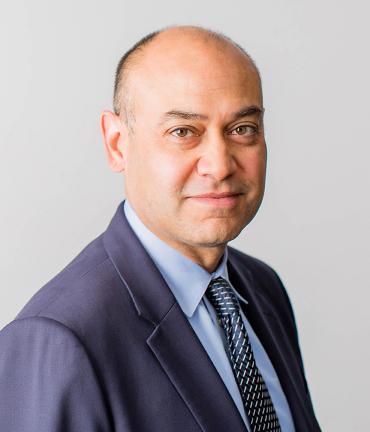
Ependymoma
An ependymoma is a rare type of brain cancer, mostly seen in children.
Ependymomas develop from ependymal cells, which line the fluid-filled cavities (called ventricles) in the brain, in addition to the fluid-filled central canal of the spinal cord.
Ventricles are filled with cerebrospinal fluid (CSF), which helps cushion the brain from trauma. When ependymomas develop, they often interfere with the flow of CSF within the brain, causing a buildup of CSF and an increase in pressure. This condition, also called hydrocephalus, is often associated with headaches (or a rapidly increasing head size in infants) and is often the first symptom.
Ependymomas are a type of glioma, which refers to any tumor that arises from glial cells (also called glia). Glial cells provide support to neurons and perform a variety of functions across the nervous system. Ependymal cells are just one type of glial cells.
Symptoms of ependymoma will vary, depending on the size and location of the tumor, as well as the patient’s age. Some of the more common symptoms include the following:
- Headaches
- Nausea or vomiting
- Enlargement of the head (in infants)
Headaches, nausea, and vomiting can be signs of increased pressure in the brain, which can occur if a tumor is large enough to block the flow of CSF in the brain.
If an ependymoma is in the cerebral hemispheres, the tumor may cause headaches, seizures, or neurological deficits like muscle weakness on one side.
If an ependymoma is near the brainstem, symptoms may include neck pain, crossed eyes, balance problems, and difficulty walking.
Ependymomas that are located in the spinal cord may cause back pain, leg weakness, and bladder or bowel dysfunction.
Ependymomas can occur in both adults and children, accounting for 1.8% of all primary brain tumors.1 In 2017, an estimated 1,340 new adult and pediatric cases were diagnosed in the United States.1
In adults, ependymoma is more likely to arise in the spinal cord, while ependymoma in children are typically found near the cerebellum or brainstem.
For most patients, the cause of ependymoma is unknown. However, there are a few rare, genetic conditions that may increase a patient’s chance of developing ependymoma. For example, patients with neurofibromatosis type 2 (NF2) may be more likely to develop ependymomas, among other tumors.2
Ependymomas can be classified according to a variety of factors, including by grade, histological characteristics (how the tumor cells look under a microscope), and more recently, genetic characteristics. The major types of ependymomas are listed below:
- Subependymoma (grade I) is a slow-growing ependymoma that typically arises near a ventricle.
- Myxopapillary ependymoma (grade I) is a slow-growing ependymoma that typically arises in the spinal column.
- Ependymoma (grade II) is the most common of the ependymal tumors and typically arises within or near the ventricular system. Based on the histological characteristics of the tumor cells, ependymomas can be classified into further subtypes: papillary ependymoma, clear cell ependymoma, and tanycytic ependymoma.
- Ependymoma, RELA fusion-positive (grade II-III) is an ependymoma that has been identified to contain a specific fusion between the RELA and C11orf95 genes. Ependymomas with this specific genetic variant account for >70% of ependymomas that occur in the cerebrum (the top portion of the brain above the cerebellum, also called supratentorial).3
- Anaplastic ependymoma (grade III) is a more rapidly growing ependymoma that has higher likelihood of recurring. Anaplastic ependymoma typically occurs in the cerebellum or brainstem.
Ependymomas can also be described based on their location in the brain. If an ependymoma is located in the cerebral hemispheres, it may be referred to as a supratentorial ependymoma meaning “above the tentorium” (the membrane separating the top two-thirds of the brain from the bottom third). In contrast, an ependymoma located “below the tentorium” in the cerebellum or brainstem, may be called an infratentorial ependymoma.
Surgery is considered the most effective treatment for ependymomas. After a surgical biopsy confirms diagnosis, the primary objective is to remove as much of the tumor as possible, while protecting critical brain function. It may be difficult to fully remove the tumor, as many ependymomas occur near brainstem regions that control important functions like swallowing.
For patients experiencing hydrocephalus, surgical removal of the ependymoma may be enough to relieve the increased brain pressure. In some cases, a temporary or permanent drainage system (called a ventriculoperitoneal shunt) may be placed to remove excess fluids from the brain.
Additional treatment like radiation or chemotherapy will depend on a variety of factors, including the following:
- Patient’s age
- Ependymoma subtype
- Whether the tumor was fully removed during surgery
- Whether the tumor has metastasized (or spread) to other parts of the brain or spinal cord
The outcomes for patients with ependymoma can vary, depending on a variety of factors. Characteristics of the tumor itself can greatly affect outcomes. Such features may include tumor subtype, histological characteristics, gene expression profiles, tumor location, and level of metastasis. In general, for both adults and children, the best patient outcomes occur when the tumor can be completely removed.
Finding information about specific prognoses and survival rates is a personal decision. The current statistics are only summary data, and don’t necessarily reflect results from new or experimental therapies. These data do not determine how individual patients might respond to their treatment – everyone is different. That said, some people may choose to look for this information, which can be found in the most recent CBTRUS Statistical Report, in Tables 21-25.1
- Ostrom, Q.T., et al., CBTRUS Statistical Report: Primary brain and other central nervous system tumors diagnosed in the United States in 2010-2014. Neuro Oncol, 2017. 19(suppl_5): p. v1-v88.
- Campian, J. and D.H. Gutmann, CNS Tumors in Neurofibromatosis. J Clin Oncol, 2017. 35(21): p. 2378-2385.
- Parker, M., et al., C11orf95-RELA fusions drive oncogenic NF-kappaB signalling in ependymoma. Nature, 2014. 506(7489): p. 451-5.
Surgical Specialists
This content was reviewed by UCSF pediatric neurosurgeon, Nalin Gupta MD, PhD.


